Enjoy Tom Yum Soup and other creative Tom Yum dishes anytime with this easy Thai Tom Yum Paste. Use it as a Classic Tom Yum Soup base, or to spice up your stir-fries and marinades.
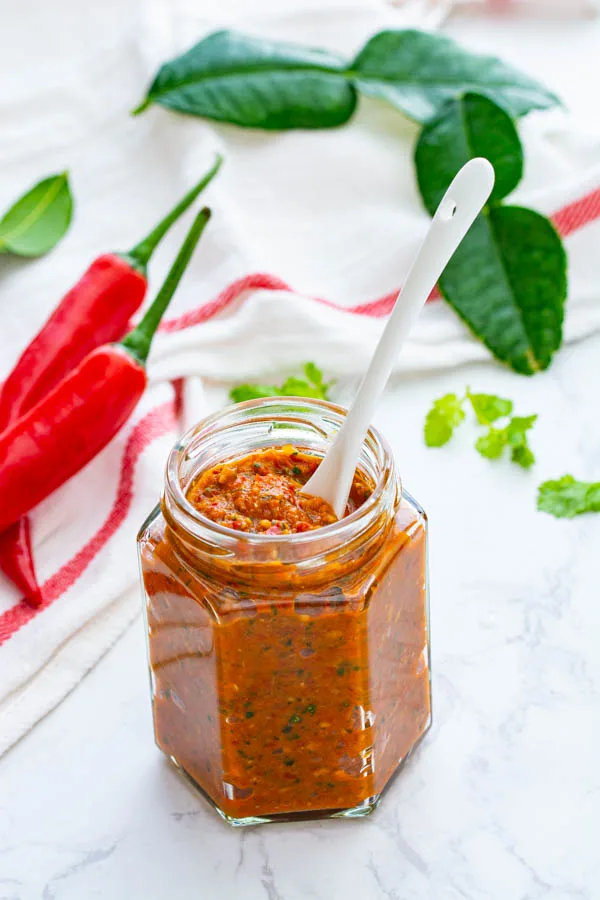
Tom Yum is arguably one of the most popular Thai dishes in the world. Spicy, sour, a little sweet, incredibly aromatic and flavorful.
With this Thai Tom Yum Paste, you can enjoy Tom Yum almost instantly anytime!
In addition to just soups, you can also use Tom Yum Paste in creative ways such as this Thai Tom Yum Shrimp Stir-Fry and these Roasted Tom Yum Cashews. Tom Yum Paste also acts as a fantastic marinade.
The possibilities are endless!
What is Tom Yum Paste?
Classic Tom Yum Soup is prepared by boiling several ingredients such as lemongrass, galangal, shrimp and kaffir lime leaves.
Tom Yum Paste delivers all the Tom Yum flavors that you love in a convenient concentrated base. Whip up a quick Tom Yum Soup in a fraction of the time, or use it to give your hotpot stock a spicy twist.
It is widely used as a soup base but can also be used in stir-fries, marinades, sauces, and various other applications.
To make Tom Yum Soup, simply add 1 tablespoon of the paste to about 2 cups of boiling water or chicken stock. Add your favorite Tom Yum Soup ingredients such as shrimp, mushrooms, fresh cilantro and a squeeze of fresh lime juice.
How to Make Thai Tom Yum Paste
Soak 10 – 15 dried red chilies in a bowl of warm water.
In a separate small bowl, soak 1 tablespoon of tamarind paste in 1/4 cup of warm water.
Allow the chilies and the tamarind paste to soak for about 15 minutes
After the chilies have soaked, cut them up into 1-inch pieces. Rinse out the seeds as you slice the chilies.
I like to cut these chilies right by the kitchen sink so that I can leave the tap water running at a slow flow – I can easily rinse the seeds out under the tap water as I cut into each piece.
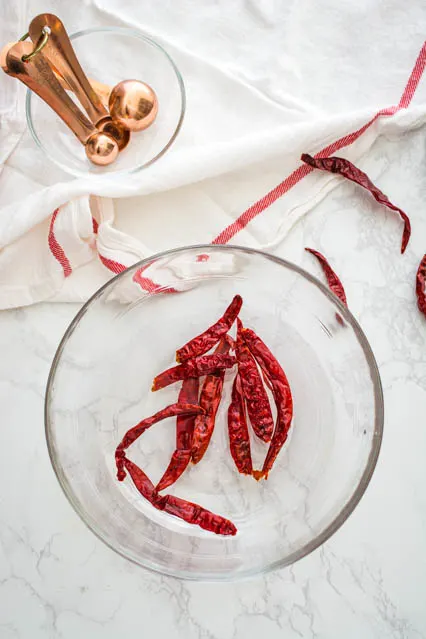
Gently squeeze the tamarind paste with your fingers to extract as much of the juice as possible. Discard the pulp (and tamarind seeds, if any) but save the tamarind juice.
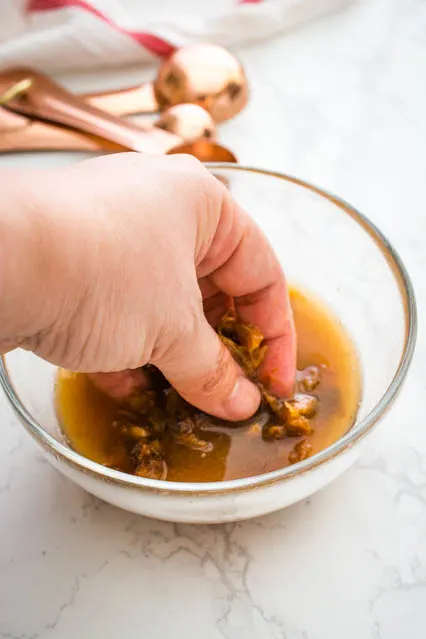
Add the following ingredients into a food processor or blender:
- Tamarind juice (from the soaked tamarind paste)
- 10 – 15 dried red chilies (soaked, sliced, seeds removed)
- 3 fresh red chilies (sliced into 1/4-inch pieces)
- 3 stalks lemongrass (white portion, thinly sliced)
- 5 small shallots
- 1 inch galangal (grated)
- 5 kaffir lime leaves (stems removed, julienned)
- 2 tablespoons brown sugar
- 2 tablespoons coconut oil
- 1 tablespoon dried shrimp (optional)
- 1 cup fresh cilantro leaves
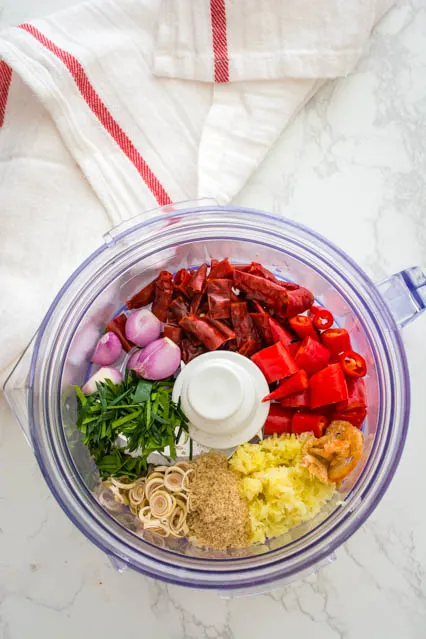
Blend the ingredients to a paste.
This recipe yields approximately 1 cup of Tom Yum Paste. Since you will only need about 1 or 2 tablespoons in each recipe, your Tom Yum Paste should last a while!
How to Store Tom Yum Paste
Keep the Tom Yum Paste in an airtight jar or container in the fridge for up to 1 week, or in the freezer for up to 6 months.
If you will be freezing the Tom Yum Paste, I recommend freezing them in ice cube trays (1 tablespoon in each cube) for convenience. You’ll be able to take and thaw just the right amount that you need.
Recipes with Thai Tom Yum Paste
Tom Yum Noodle Soup by Roti n Rice
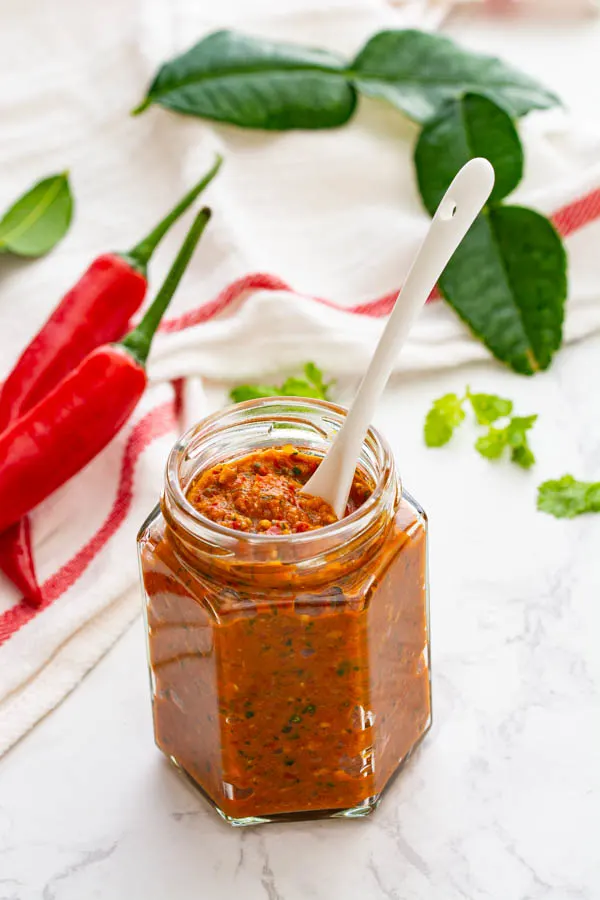
Thai Tom Yum Paste
Ingredients
- 10 - 15 dried red chilies
- 1 tablespoon tamarind paste
- 3 fresh red chilies sliced into 1/4 inch pieces
- 3 stalks lemongrass white portion only, thinly sliced
- 5 small shallots peeled
- 1 inch galangal grated
- 5 kaffir lime leaves julienned
- 2 tablespoons brown sugar
- 2 tablespoons coconut oil
- 1 tablespoon dried shrimp optional
- 1 cup cilantro leaves
Instructions
- Rinse then soak the dried red chilies in a bowl of warm water, and the tamarind paste in a separate small bowl in 1/4 cup of warm water. Allow the dried red chilies and the tamarind to soak for 15 minutes.
- Remove the seeds from the dried red chili as you slice them into 1-inch pieces.
- Gently squeeze the tamarind paste with your fingers to extract as much of the juice as possible. Discard the tamarind paste and seeds (if any).
- Pour the tamarind juice into a food processor along with the sliced dried red chili, fresh red chili, lemongrass, shallots, galangal, kaffir lime leaves, brown sugar, coconut oil, dried shrimp (optional), and cilantro leaves.
- Blend the ingredients into a paste.

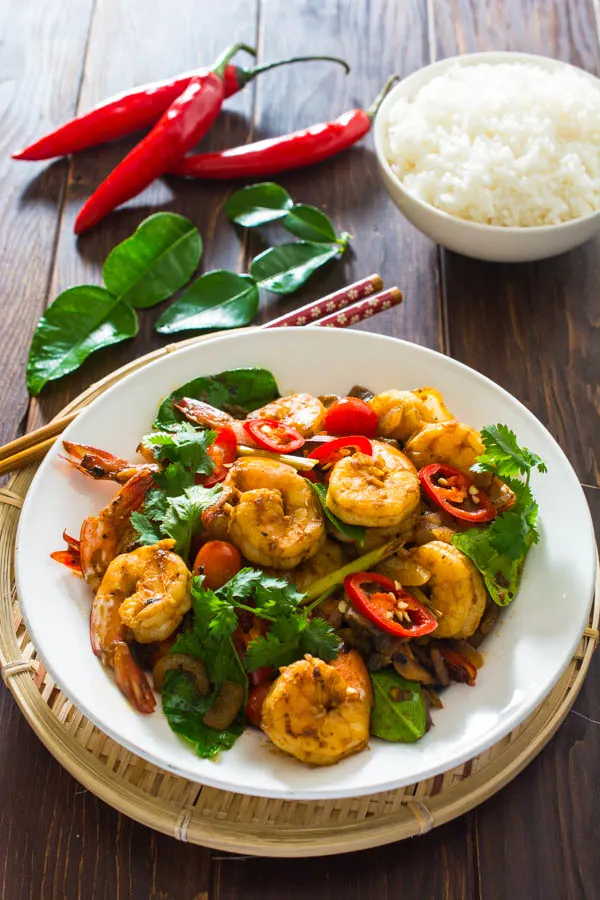
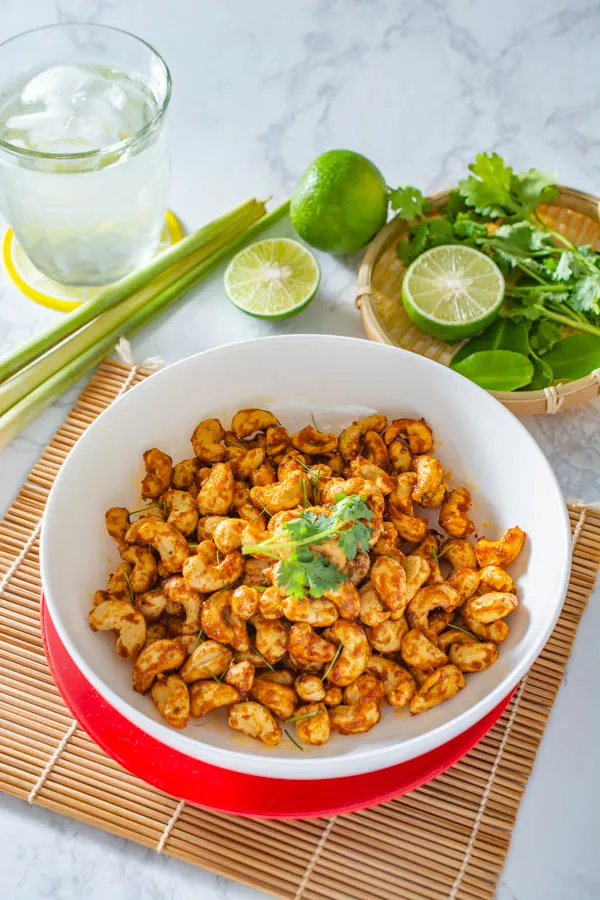
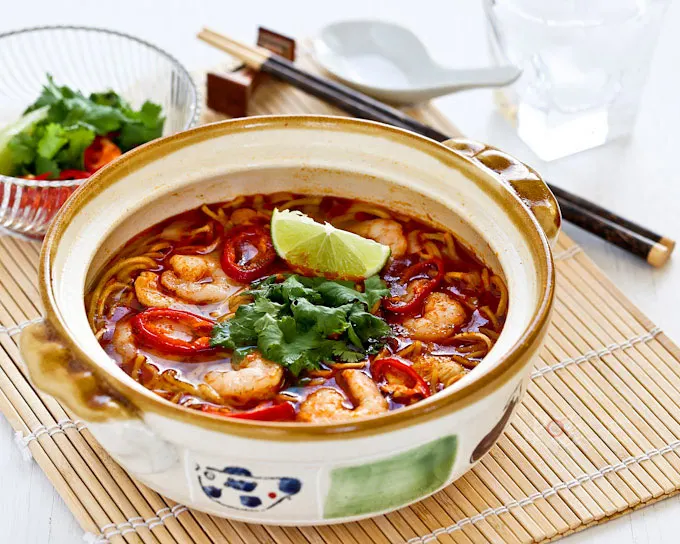
Lhyn jawjali
Tuesday 14th of July 2020
I want to learn how to make paste tom yum
Ameen shaikh
Saturday 18th of December 2021
@Charwill try at may home,
Char
Tuesday 14th of July 2020
It's really easy! I hope you give the recipe a try :)
Zahida
Thursday 2nd of July 2020
I will definitely try this recipe. Thank you for sharing :)
Char
Friday 3rd of July 2020
Thank you, Zahida! I hope you enjoy the recipe!
Oven-Grilled Thai Tom Yum Chicken | Wok & Skillet
Saturday 25th of April 2020
[…] a great way to spice up your grilled or oven-baked chicken. The marinade for this chicken includes Tom Yum Paste and other classic Thai flavors like lemongrass and fish sauce. The coconut milk in the […]
Thai Tom Yum Shrimp Stir-Fry | a recipe by Wok & Skillet
Thursday 5th of March 2020
[…] Click HERE for my homemade Thai Tom Yum Paste recipe. […]
Tom Yum Cashews - Wok & Skillet
Thursday 5th of March 2020
[…] Click HERE for my homemade Tom Yum Paste recipe. […]